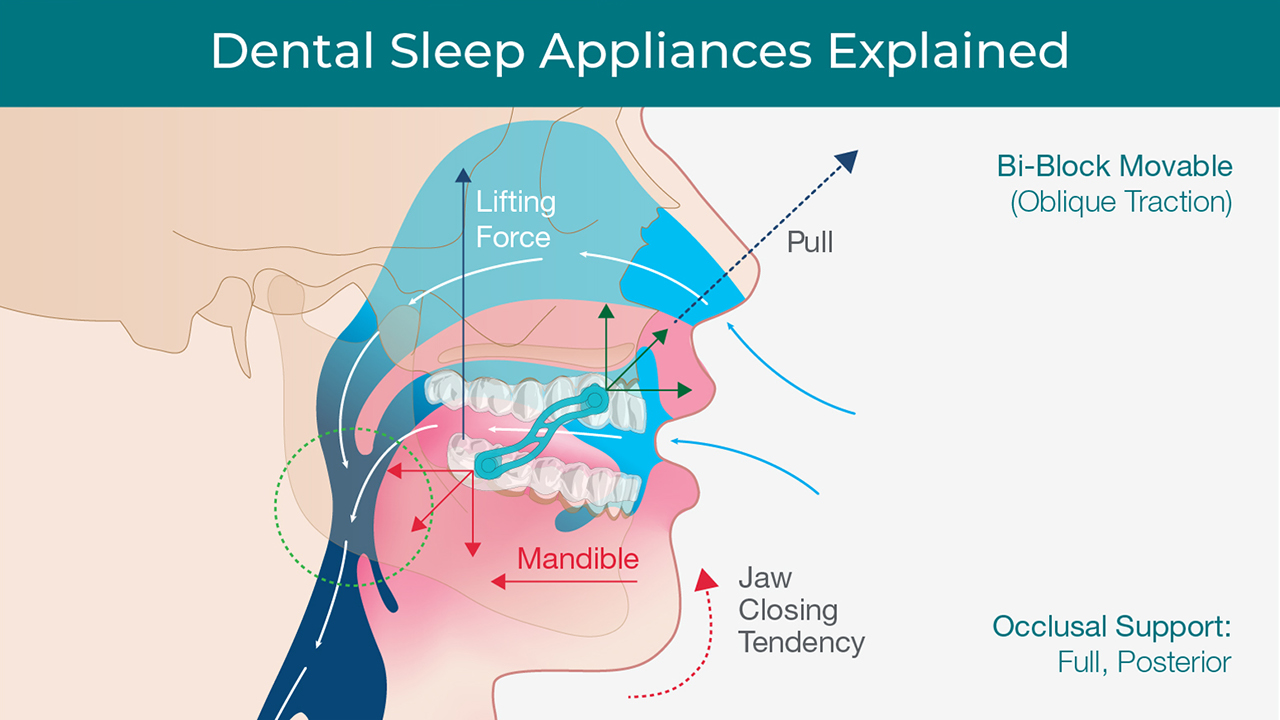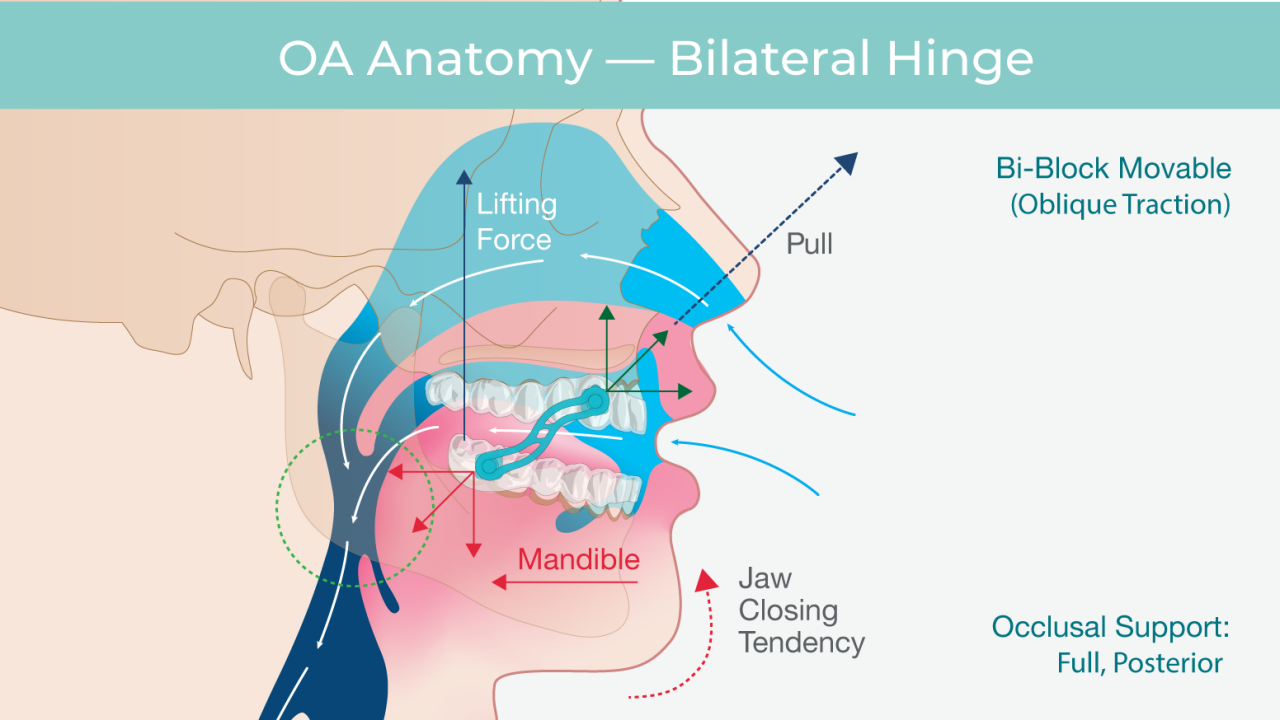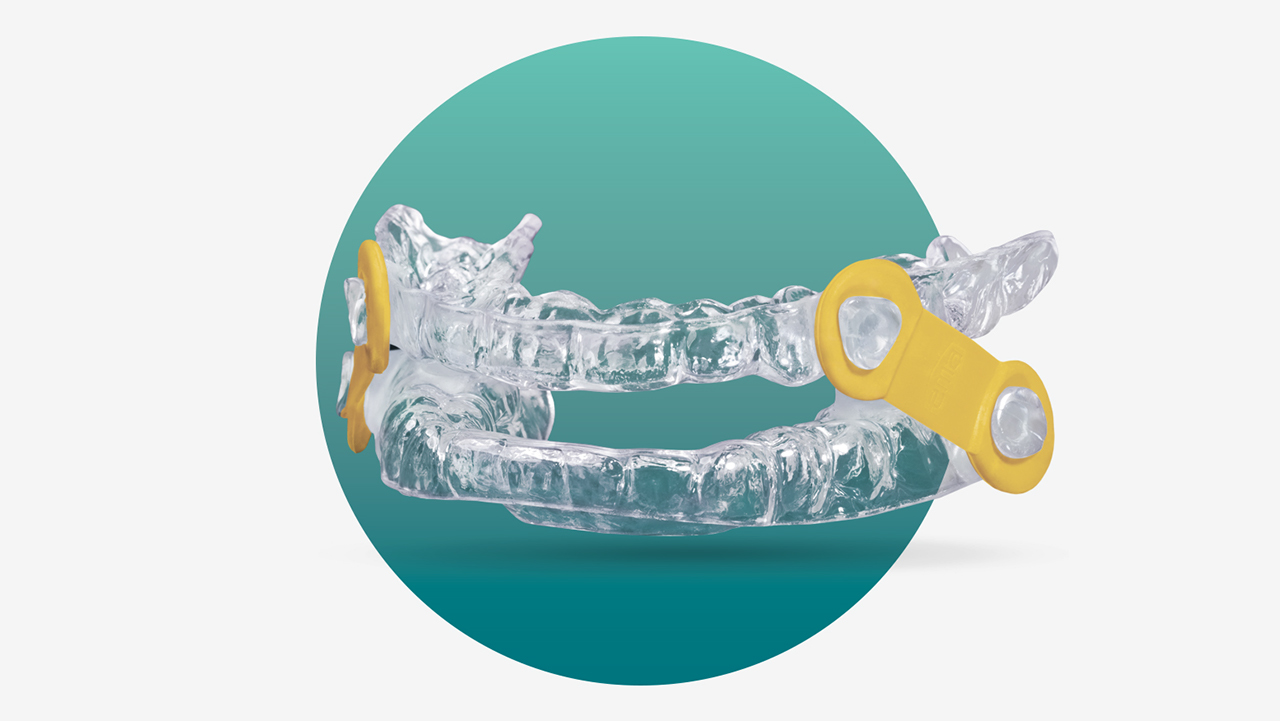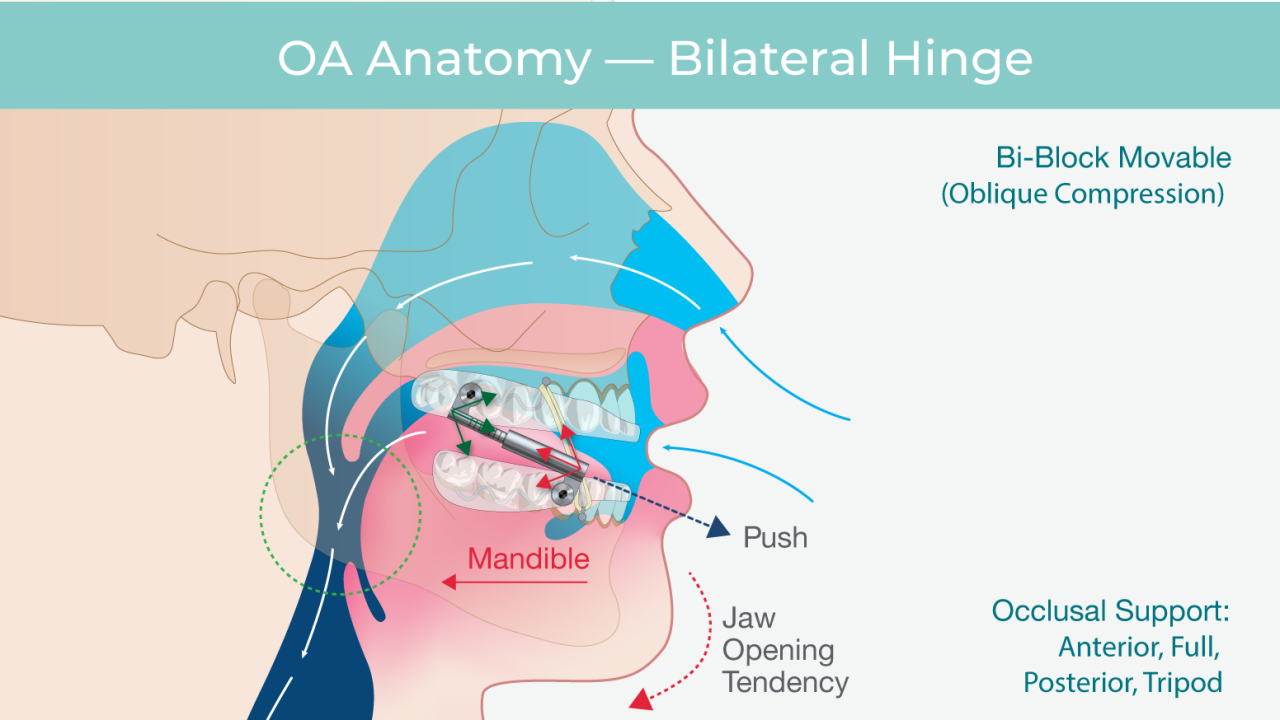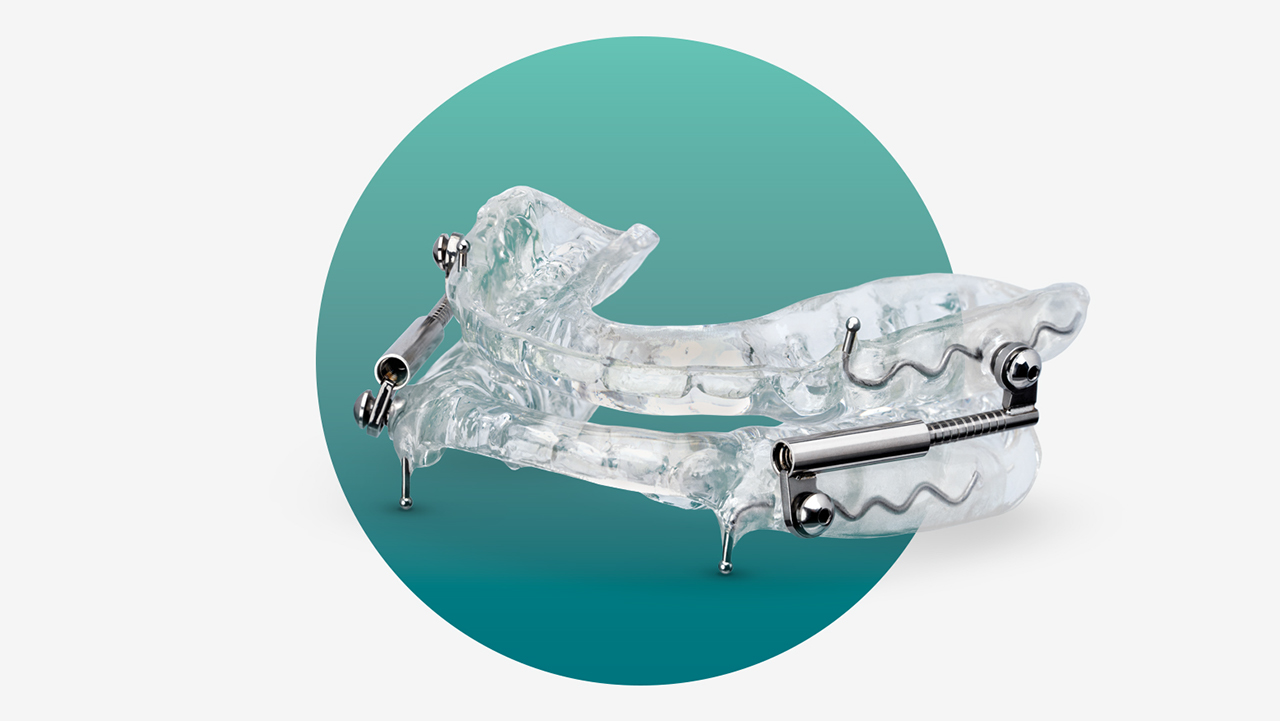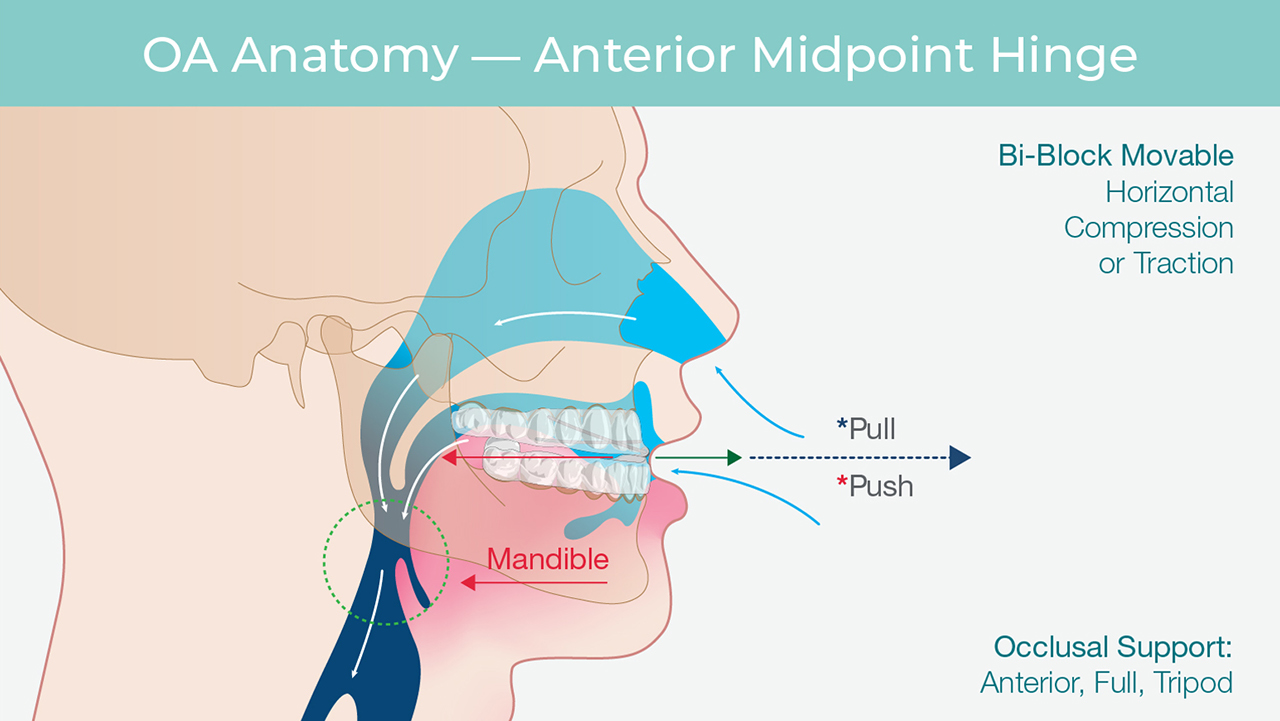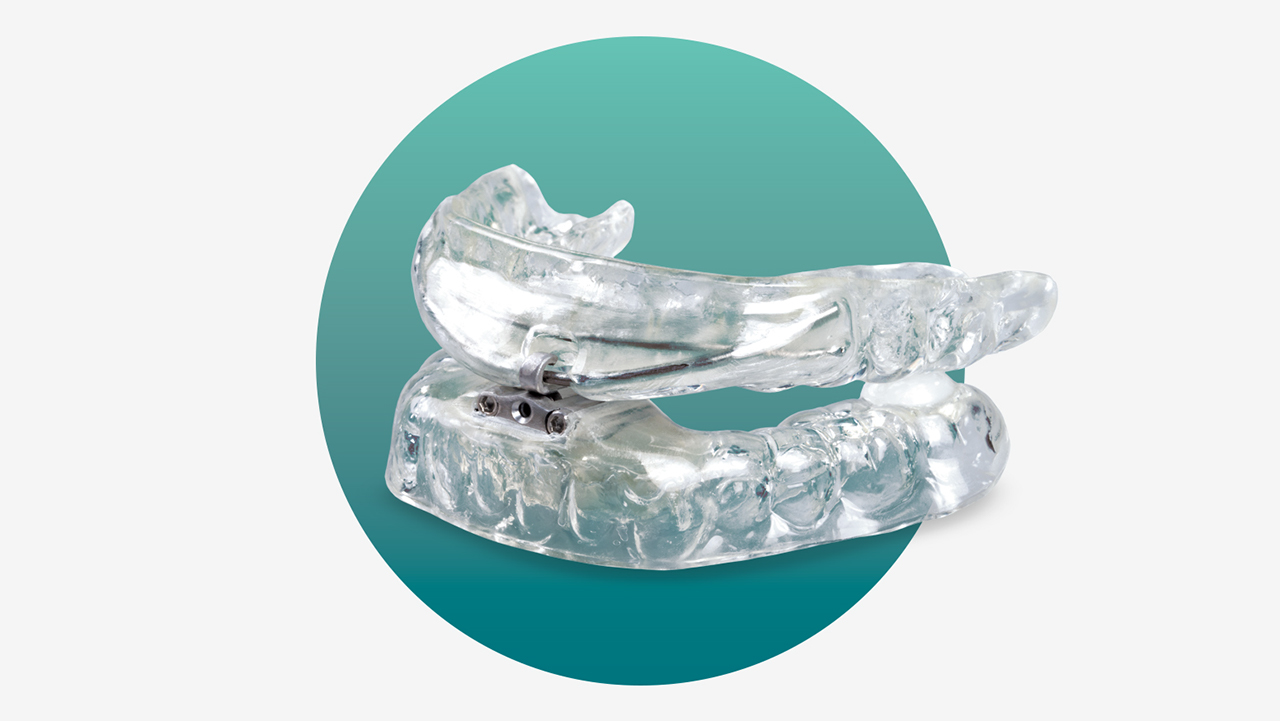This hinge design is particularly beneficial because it was selected by Medicare as an appliance design that meets the requirement for E0486, the current HCPCS (Healthcare Common Procedure Coding System) medical code for a custom-fitted mandibular sleep apnea appliance used for dental sleep medicine medical billing.
These devices are micro-adjustable by using the adjustment tool included with each appliance. Since the appliance is bilateral, it is necessary to turn the screw an equal amount on each side of the appliance. The OASYS Hinge Appliance has a scale on the arms to make balancing the titration of the appliance easy.
The position of the adjustment screw in the front of the mouth gives the clinician the option of adjusting the appliance while it is in the patient’s mouth. This appliance design is good for patients who suffer from bruxism. Patients with a claustrophobic history will respond well to this appliance because it allows freedom of movement and the ability to open their mouth.
The angle of the arms and the fact that this design pushes the jaw into protrusion can encourage an open mouth posture and mouth breathing. The addition of elastics will serve to help keep the mouth closed and the lips sealed, as well as encourage nasal breathing, which is beneficial to a good night’s sleep.


